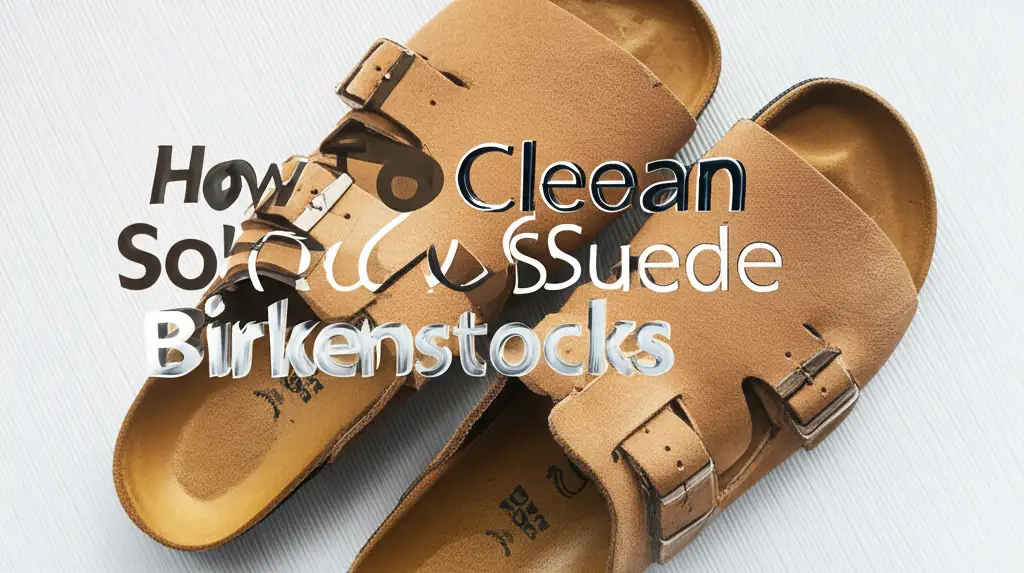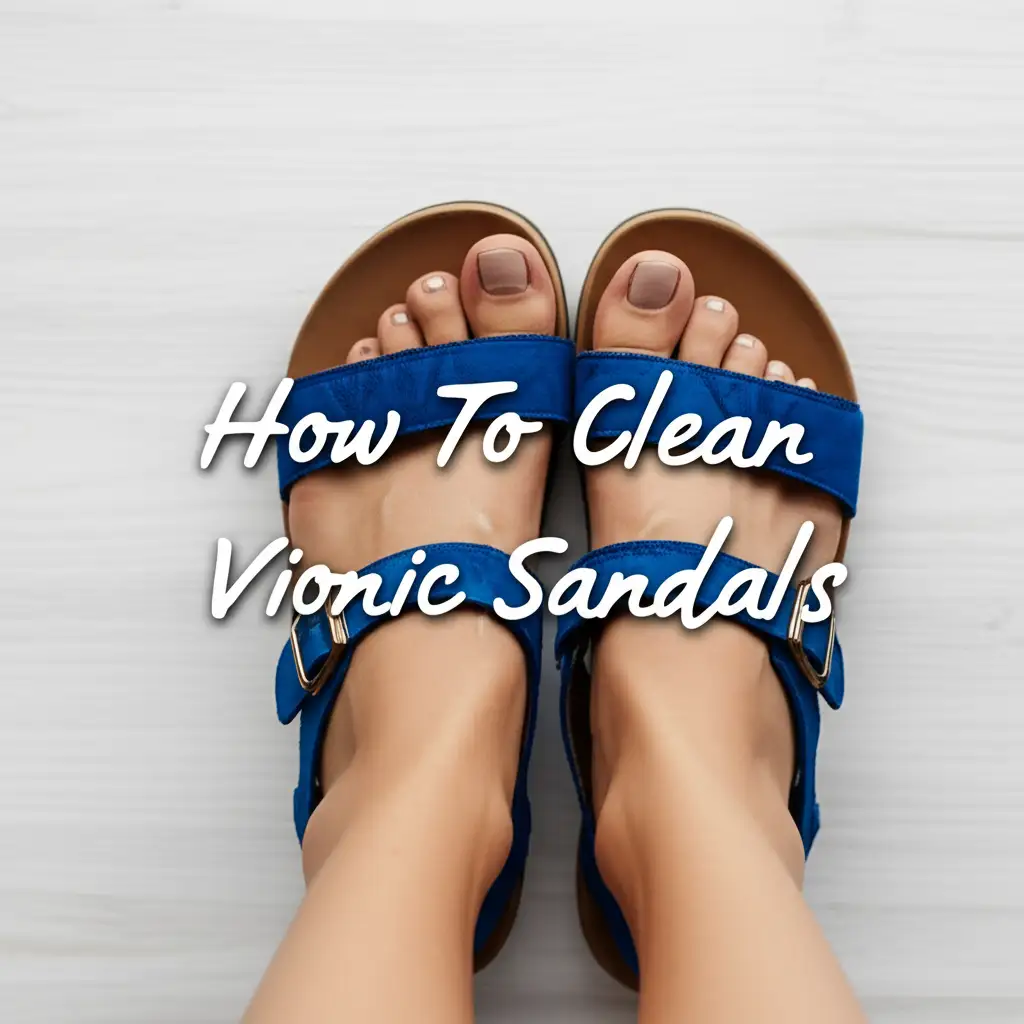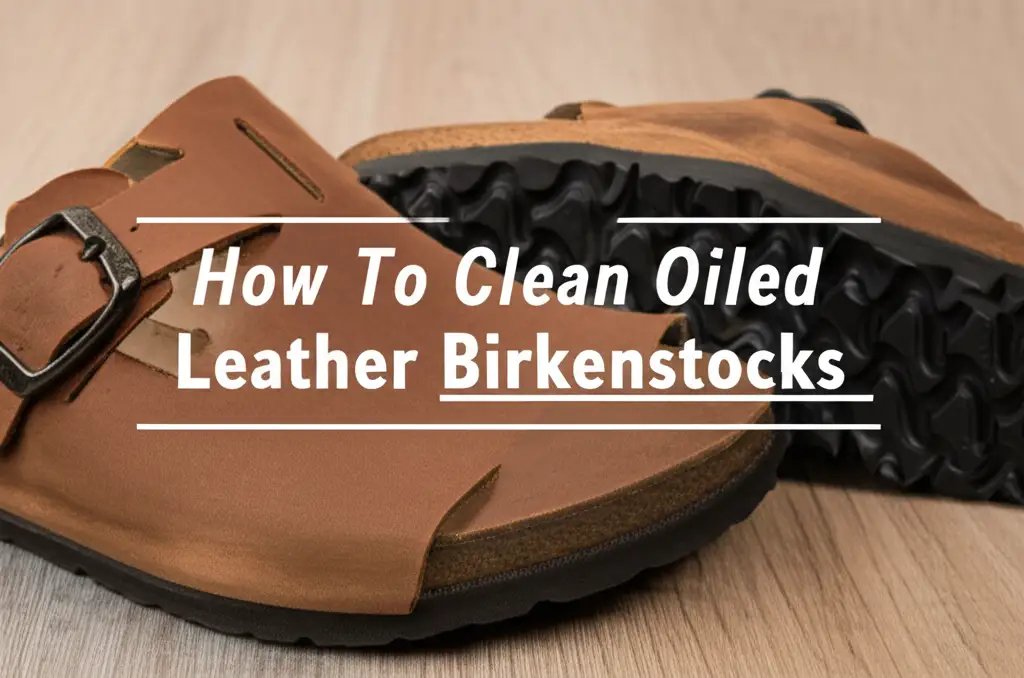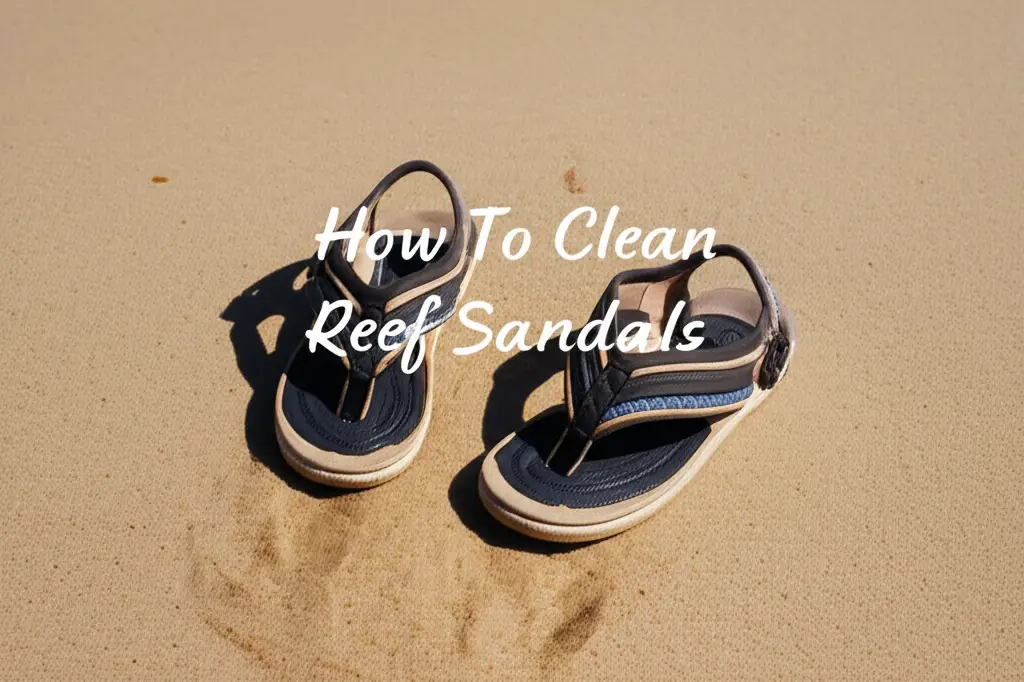· Footwear Care · 16 min read
How To Clean Slides Shoes
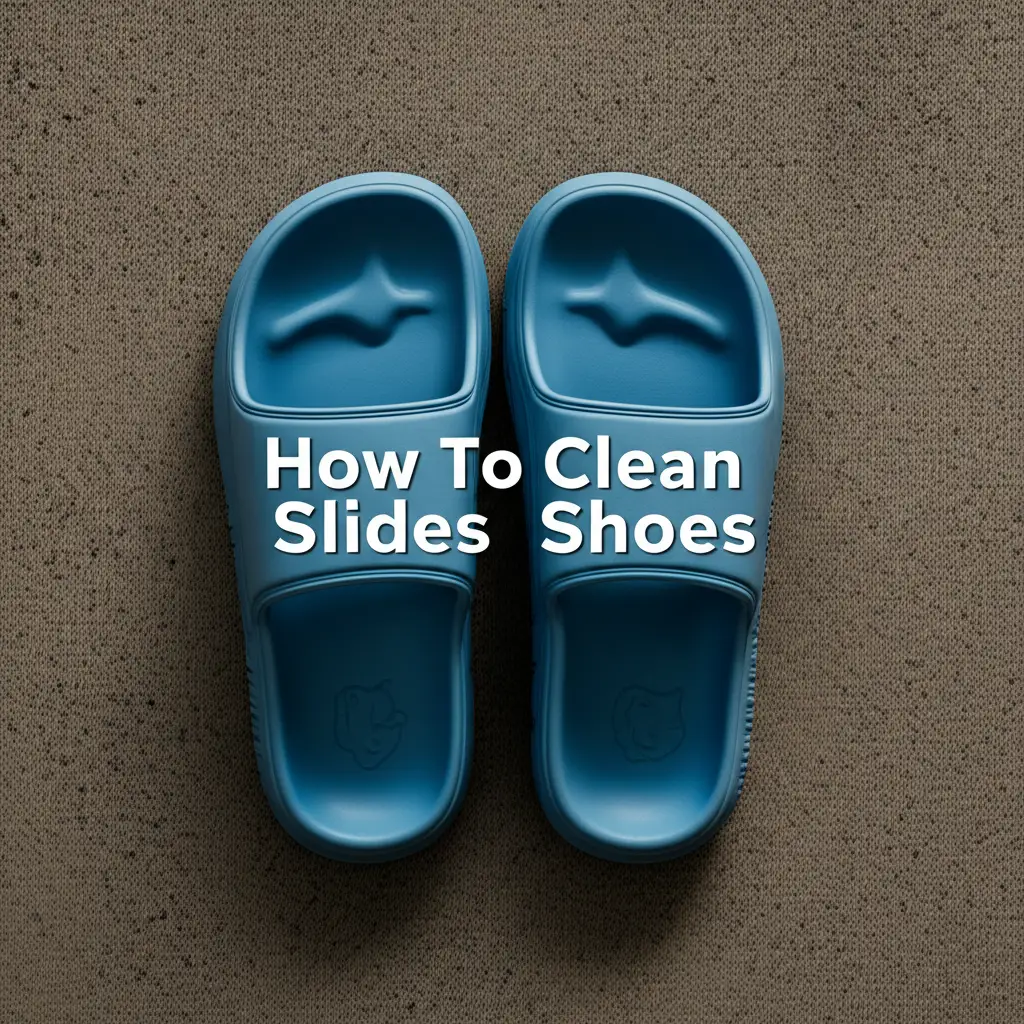
Keep Your Slides Pristine: How To Clean Slides Shoes
Slides are a popular choice for comfort and ease. They are perfect for casual outings, beach trips, or just relaxing at home. But slides also attract dirt, grime, and odors quickly. Cleaning them regularly keeps them looking good. It also helps them last longer. This guide will show you how to clean slides shoes effectively. You will learn specific methods for different materials. We will cover everything from basic cleaning to stain removal and proper drying.
Takeaway:
- Identify your slides’ material first.
- Use gentle cleaners for delicate materials.
- Always air dry slides away from direct heat.
- Clean slides regularly to prevent dirt buildup.
- Store slides properly to maintain their shape and cleanliness.
To clean slides shoes, first remove loose debris. Then, use a mild soap or specific cleaner suited for the material, like rubber, leather, or fabric. Gently scrub the surfaces, rinse thoroughly with clean water, and allow them to air dry completely to prevent mold or odor.
Understanding Your Slides: Materials Matter
Knowing what your slides are made of is the first step to proper cleaning. Different materials require different cleaning approaches. Using the wrong product can damage your slides. We will break down common slide materials. You will learn the best way to care for each one.
Rubber and EVA Slides
Many popular slides, like Adidas Adilette or Nike Benassi, use rubber or EVA foam. These materials are very durable. They are also water-resistant. This makes them relatively easy to clean. You can usually use a simple soap and water solution. These slides handle a good scrub well. They are great for everyday wear.
EVA (Ethylene-vinyl acetate) is a soft, flexible foam. It is very lightweight. Rubber is more dense and provides better grip. Both materials resist water and most stains. However, they can still collect dirt, especially on textured surfaces. Regular cleaning keeps them looking new.
Leather and Suede Slides
Some slides feature premium materials like leather or suede. These materials need much more care. Leather can crack or dry out if not cleaned properly. Suede is delicate and can stain easily with water. It needs special cleaning products. Always check the manufacturer’s care instructions for these types of slides.
Leather slides offer a classic, refined look. They require specific leather cleaners and conditioners. Suede slides feel soft and luxurious. They are very sensitive to moisture and abrasion. Special brushes and erasers work best for suede. Using harsh chemicals will ruin these materials.
Fabric and Textile Slides
Fabric slides might use cotton, canvas, or synthetic textiles. These are comfortable and breathable. They can absorb stains and odors more easily than rubber. Fabric slides often need spot cleaning. Some might be suitable for gentle hand washing. Always test cleaning solutions on a small, hidden area first. This prevents color fading or damage.
Fabric slides are popular for their soft feel. They can be found in many casual styles. Dirt can embed itself deep within the fibers. This requires careful cleaning. Odors can also cling to fabric. Proper drying is crucial to prevent mildew.
General Cleaning Steps for Most Slides
Before diving into specific material care, there are general steps that apply to most slides. Following these initial actions makes the cleaning process easier and more effective. You will prepare your slides for a deeper clean. This also helps prevent spreading dirt.
Gather Your Cleaning Supplies
First, collect all necessary items. You will need a soft brush or old toothbrush. A microfiber cloth or sponge is also useful. Prepare a bowl of warm water. Have a mild soap ready. Dish soap or laundry detergent often works well for general cleaning. For white rubber, consider how to clean white rubber shoes specific tips. These basic supplies form the foundation of your cleaning kit.
Here is a list of general cleaning supplies:
- Soft-bristled brush (like an old toothbrush)
- Microfiber cloths or sponges
- Small bowl or basin
- Mild liquid soap (dish soap or laundry detergent)
- Clean water
- Paper towels or old towels
Remove Loose Dirt and Debris
Begin by removing any loose dirt or debris. Take your slides outside and clap them together. This dislodges larger pieces of dirt, sand, or small pebbles. Use your hand to brush off any remaining loose particles. You can also use a dry soft brush. This step prevents scratching your slides when wet cleaning. It also keeps your cleaning water cleaner for longer.
Prepare Your Cleaning Solution
Mix a small amount of mild soap with warm water in a bowl. Stir until suds form. For a general clean, a tablespoon of soap per cup of water is usually enough. For tougher dirt, you might use a slightly stronger concentration. Ensure the soap is gentle enough for your slides’ material. Strong chemicals can cause damage.
Scrubbing the Surfaces
Dip your soft brush or cloth into the soapy water. Begin scrubbing the surfaces of your slides. Focus on dirty areas. Use gentle circular motions. For textured soles, a toothbrush works well to reach into grooves. Do not saturate delicate materials like suede. Scrubbing removes surface grime and stains.
Pay attention to the footbeds. These areas often accumulate sweat and dirt. For how to clean the inside of shoes, use the same gentle scrubbing technique. Ensure you clean all parts of the slide. This includes straps, buckles, and the sides.
Rinse Thoroughly
After scrubbing, rinse your slides with clean water. You can hold them under a running faucet. Make sure to rinse off all soap residue. Soap left on slides can attract more dirt. It can also leave streaks. Ensure the water runs clear from all surfaces. For delicate materials, use a damp cloth to wipe away soap. Avoid soaking materials like leather or suede.
Deep Cleaning Specific Slide Materials
Different slide materials require tailored cleaning methods. A one-size-fits-all approach can damage your favorite footwear. This section provides detailed instructions for common slide types. Following these steps helps maintain the look and feel of your slides. You will keep them in top condition for longer.
Cleaning Rubber and EVA Slides
Rubber and EVA slides are very durable. They tolerate water and mild cleaners well. Start by hosing them down or rinsing them under a faucet to remove loose dirt. Then, prepare a solution of warm water and a few drops of dish soap. Use a brush with stiff bristles to scrub the entire slide. Pay close attention to textured areas and the footbed. This helps remove grime and sweat.
For stubborn scuffs, apply a small amount of rubbing alcohol to a cotton ball. Gently rub the scuff mark. Be careful not to use too much alcohol, as it can dry out rubber over time. For white rubber, baking soda mixed with water to form a paste can brighten surfaces. Apply the paste, let it sit for a few minutes, then scrub and rinse. Remember to rinse thoroughly after cleaning to remove all soap residue. This prevents slipping and keeps slides fresh.
Cleaning Leather Slides
Leather slides require a gentle touch. Harsh chemicals or excessive water can damage the material. Begin by wiping down the slides with a dry, soft cloth to remove dust. Mix a very small amount of mild soap with distilled water. Dampen a clean cloth with this solution. Gently wipe the leather surfaces. Do not rub too hard.
For how to clean scuff marks off shoes on leather, a leather cleaner specifically designed for shoes is best. Apply it with a soft cloth. Follow the product instructions carefully. After cleaning, wipe with a clean, damp cloth to remove any residue. Allow the leather to air dry completely away from direct sunlight or heat. Once dry, apply a leather conditioner. This keeps the leather soft and prevents cracking. Conditioning is a vital step for leather longevity.
Cleaning Fabric and Textile Slides
Fabric and textile slides can be tricky. They absorb dirt and moisture readily. Start by brushing off loose dirt with a dry, soft brush. For spot cleaning, mix a small amount of mild laundry detergent with water. Dampen a clean cloth or sponge with the solution. Gently blot the stained area. Avoid rubbing harshly, as this can spread the stain.
For more extensive cleaning, you can hand wash fabric slides. Fill a basin with cool water and a small amount of gentle detergent. Submerge the slides and gently agitate them with your hands. Use a soft brush to scrub specific dirty areas. Rinse thoroughly under cool, running water until no suds remain. Squeeze out excess water gently. Do not twist or wring the fabric. Air dry completely. For issues like how to clean mold off shoes on fabric, a diluted vinegar solution can be effective. Always test on a hidden area first.
Tackling Tough Stains and Odors on Slides
Slides often face tough challenges beyond everyday dirt. Stubborn stains and unpleasant odors are common issues. Knowing how to address these specific problems helps keep your slides in top condition. These methods focus on common slide problems. They provide effective solutions.
Removing Stubborn Stains
Different stains need different treatments. For grass stains, mix baking soda with water to form a paste. Apply it to the stain and let it sit for about 15 minutes. Then, scrub gently with a brush and rinse. For how to clean grass stains off shoes, this method works well on most durable materials. Mud stains often dry and flake off. For remaining residue, use a soft brush after the mud is dry. Then clean with mild soap and water.
Oil-based stains are tougher. For these, use a small amount of cornstarch or talcum powder to absorb the oil. Let it sit for several hours, then brush it off. Follow with a mild soap solution. Always test any stain remover on a hidden spot first. This checks for colorfastness. Prompt action on stains is best.
Eliminating Unpleasant Odors
Slides can become smelly due to sweat and bacteria. Regular cleaning helps, but sometimes you need extra steps. For how to clean smelly shoes, baking soda is a powerful natural deodorizer. Sprinkle a generous amount inside the slides, especially on the footbed. Let it sit overnight, or even for 24 hours. Then, shake out the powder. You can also put baking soda in an old sock or sachet. Leave it inside the slides when not in use.
Another option is white vinegar. Mix equal parts white vinegar and water in a spray bottle. Lightly mist the inside of the slides. Vinegar neutralizes odors. The vinegar smell disappears as it dries. Ensure the slides are fully dry before wearing them again. Sunlight can also help kill odor-causing bacteria. Place your slides outside on a sunny day for a few hours.
Dealing with Mold and Mildew
Mold and mildew can grow on slides if they stay damp. This is especially true for fabric or footbeds. A solution of equal parts white vinegar and water is effective. Spray it on the affected areas. Let it sit for 10-15 minutes. Then, scrub with a brush. Rinse well and dry thoroughly in a well-ventilated area. For persistent mold, you may need a specialized mold remover. Always wear gloves when handling mold. If the mold is severe or smells strongly, it might be safer to replace the slides. Preventing mold by proper drying is the best approach.
Proper Drying and Storage for Slides
Cleaning your slides is only half the battle. Proper drying and storage are equally important. These steps prevent damage, mold growth, and bad odors. They also help your slides maintain their shape and last longer. Neglecting these steps can undo all your cleaning efforts.
The Importance of Air Drying
Always air dry your slides. This is the safest and most effective method. Direct heat from sources like radiators, hair dryers, or direct sunlight can damage slide materials. Heat can shrink rubber or EVA foam. It can crack leather. It can also warp the shape of your slides. Place your cleaned slides in a well-ventilated area. A shaded spot outdoors or indoors with good airflow is ideal.
Allow ample time for them to dry completely. This might take several hours or even overnight. Patience is key here. Ensuring complete dryness prevents mildew and persistent odors. If the insides are very wet, you can loosely stuff them with paper towels. This absorbs moisture and helps them hold their shape. Change the paper towels if they become very damp.
Avoiding Direct Heat
As mentioned, avoid direct heat. This cannot be stressed enough. High temperatures cause materials to degrade. Rubber can become brittle. EVA foam can lose its cushioning properties. Leather can dry out and crack. Even strong sunlight can fade colors over time, especially on brightly colored slides. Choose a cool, dry place for drying. This ensures your slides retain their original form and feel.
Proper Storage Techniques
Once your slides are thoroughly dry, proper storage helps maintain their condition. Store them in a cool, dry place. Avoid storing them in damp environments like a humid basement or directly on a wet bathroom floor. This prevents mold and mildew. Keep them away from direct sunlight.
If you have multiple pairs, consider using shoe racks or cubbies. This keeps them organized and allows air circulation. For slides that might lose their shape, such as those with soft uppers, you can loosely stuff them with acid-free tissue paper. This helps them retain their form without stretching. Proper storage protects your slides from dust, dirt, and environmental damage. It keeps them ready for your next use.
Maintaining Your Slides for Longevity
Regular care goes beyond just deep cleaning. It involves a consistent routine that extends the life of your slides. Proactive maintenance prevents major issues. It keeps your slides looking and feeling fresh daily. Think of it as a small investment in their durability.
Regular Quick Cleans
Do not wait for your slides to become heavily soiled. Perform quick cleans regularly. After each wear, especially outdoors, take a moment to wipe them down. Use a damp cloth to remove any dust or light dirt. For rubber or EVA slides, a quick rinse under the tap is often enough. This simple habit stops dirt from building up. It makes deep cleaning less frequent. It also helps prevent scuff marks from setting in. This daily attention saves time and effort later on.
Using Protective Sprays
For certain materials, protective sprays offer an extra layer of defense. Water and stain repellent sprays work well on fabric, suede, and even some leathers. These sprays create a barrier. This barrier helps liquids and dirt bead up on the surface. They do not soak in. Always check the spray’s compatibility with your specific slide material. Apply it in a well-ventilated area. Follow the product instructions for best results. Reapply the spray periodically, especially after deep cleaning. This maintains the protective coating.
Proper Rotation and Usage
If you own multiple pairs of slides, rotate them. Wearing the same pair every day causes faster wear and tear. Rotation allows slides to air out fully between uses. This is especially important for how to clean smelly shoes prevention. It reduces foot odor and bacterial buildup. Rest your slides for at least 24 hours between wears. This gives them time to dry out naturally. Proper usage also means choosing the right slides for the activity. Avoid wearing your delicate leather slides for heavy outdoor activities. Reserve durable rubber slides for beach or poolside use. This matching of slide type to activity extends their life significantly.
By incorporating these maintenance habits, your slides will stay in excellent condition. You will enjoy their comfort and style for a much longer time. It is a simple way to protect your footwear investment. These steps ensure your slides always look their best.
FAQ Section
Can I put my slides in the washing machine?
Generally, no. Most slides, especially those made of rubber, EVA, leather, or suede, should not go in a washing machine. The machine’s agitation can damage the materials, cause shrinking, or loosen adhesives. Always hand wash slides for best results. Fabric slides might tolerate a very gentle, cold cycle, but hand washing is still safer.
How often should I clean my slides?
Clean your slides as often as they get dirty. For daily wear, a quick wipe-down after each use is good. A more thorough clean every 2-4 weeks is usually sufficient for casual use. If you wear them to the beach or pool frequently, clean them after every few uses. Regular cleaning prevents dirt buildup and odors.
What is the best cleaner for slides?
The best cleaner depends on the slide material. For rubber and EVA, mild dish soap and water work great. For leather, use a specialized leather cleaner. For suede, use a suede brush and eraser or a suede-specific cleaning spray. Always choose a cleaner appropriate for your slides’ material.
How do I remove black marks from slides?
For black scuff marks on rubber or EVA slides, try a magic eraser. Gently rub the mark with the damp eraser. For leather, use a leather cleaner or a tiny bit of rubbing alcohol on a cotton swab, then condition. For how to clean scuff marks off shoes, always test on a hidden area first.
Can I use bleach on white slides?
Using bleach on white slides is not recommended. Bleach can degrade rubber and EVA foam over time. It can also cause yellowing or damage to certain plastics. For white slides, use a paste of baking soda and water, or a mild cleaner designed for white shoes. Hydrogen peroxide can also be an alternative for brightening.
How to dry slides quickly?
To dry slides quickly, first pat them thoroughly with a clean towel. Then, place them in a well-ventilated area with good air circulation. A fan can speed up drying. Avoid direct sunlight or artificial heat sources like radiators or hair dryers. These can damage the slide materials. Proper air drying prevents mold and odor.
Conclusion
Keeping your slides clean helps them last longer and look better. We have explored simple yet effective methods for different slide materials. From general cleaning steps to tackling tough stains and odors, you now have the knowledge. Remember that identifying the material is the first crucial step. Then, apply the right cleaning and drying techniques.
Regular care, proper drying, and smart storage will keep your slides fresh. You can enjoy your comfortable footwear for many seasons to come. Do not let dirt and grime diminish your favorite slides. Take these steps and keep your slides shoes clean. Explore more cleaning tips on BeACleaner.com for all your footwear needs.
- slide sandals
- shoe cleaning
- footwear maintenance
- rubber slides
- synthetic slides
- sandal care

